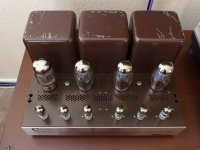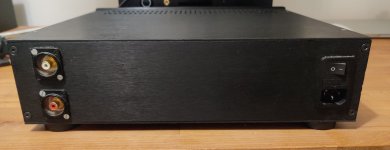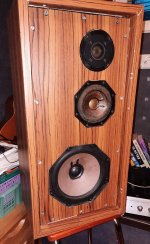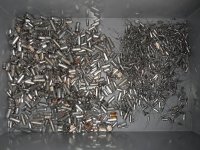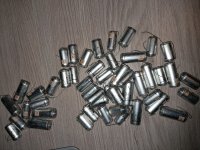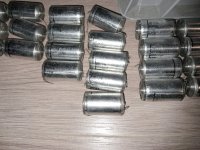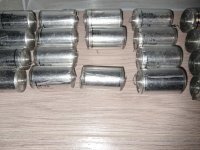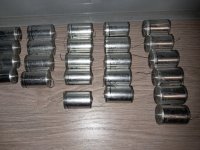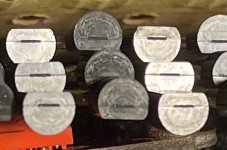I had tried using inverters and big batteries to make my system sound better.
I sincerely think they did work initially but even the GIANDEL rated for 5000 watts inverter could not handle supplying a constant 500 watts total for four THF51 based amplifiers for the two hours I would usually listen. At the end they began to act strangely and make funny sounds so I returned to AC and continued to use the FO-FELIX filters that have been very popular for years in the GROUP BUYS section.
It was obvious that AC from the wall was superior. I do not doubt the inverters had a soft fail. No one wants to buy a new inverter every year.
The inverters produced a 22 kHz spike one could see with RTA - though I could not hear such a thing one has to figure it could produce problems at lower frequencies. I could never figure out if the noise emanated from the inverter or the AC wires coming out from it.
In December I took a look at AUDIO ASYLUM, which I do not do very often, and saw a post from a fellow talking about ground boxes and using Rochelle salt to control AC noise. I know the first time I saw an ENTREQ box I laughed as most did. I could never bring myself to pay that kind of money for a box with stuff in it but being a DIYer I would not mind building something and hearing it for myself.
The post directed me to HEAD FI and posts by cdacosta :
https://www.head-fi.org/threads/diy-ground-box-thread.968372/
This begins with a basic guide to the ideas presented in the thread.
I bought the Rochelle salt in December and am just getting around to using it. It seemed simple to implement and it is simple to implement.
I have treated a bit over half of the switch plates and whatever you call the ones that cover receptacles in my upstairs and can say what this does is extraordinary. It does allow a reduction in noise which is about the only way to explain the far greater level of detail one will hear. cdacosta assures that the more "junctions" are treated the better. He goes into detail about tuning the amount of salt used. I am pleased with using his recommended starting point. I could hear what this does with treating the cover over my system AC receptacle. After that I started installing them in more and more. The subsequent ones do not make anywhere near as large a jump as the first one but there is a cumulative effect. Acosta assures than when his whole regimen in followed one will be amazed at what one can hear. This the combination of the salt packets, ground boxes and wraps around power cables which are all easily made.
Still waiting for the materials needed for the ground box - the magnetite (the main component) has been delayed. Cannot wait to try this. Starting with two - I use three DACs in my tri-amplified system - the main speaker left and right DACs will get them first.
The boxes are easy to assemble - I am using the recipe in the article except for little things like using hide glue I had on hand instead of the stuff recommended.
I figure what this is doing is like good cables - what is revealed could never be revealed by any other method. Some may think it is nothing more than band-aids but I counter what else do we have and we should be grateful for band-aids that work.
I was thinking last night - most of the AC work (I think of Michael Fremer's impressive AC wiring into his listening room) revolves around conductivity - removing obstacles in the path and this is important especially if one uses monstrous amplifiers to drive insensitive speakers which strikes me as wrong but that is another subject - instead of concentrating on radiation. I share with Acosta a suspicion of shielding - of course, if you absolutely need it you have no other choice but to use it - but if you do not absolutely need it it is BAD. So like naturopathic medicine we want to absorb the radiation instead of blocking it - sorry for the awkward analogy but I think it makes sense. Mr. Acosta may very well disagree with all that I have written here. Not to discount a free flow of electrons in any way but the worst aspects of the sound we attribute to our great friend and colleague AC POWER is the radiation that infects everything in its wake.
In my clumsy way I hope I have encouraged the kookiest of you to look into this. As I wrote to my audio friend in Toronto last night, the great Grant Warecki with ears that continue to amaze me, Acosta's concept is valid and important.
Just try the salt packets in a few "junctions" and hear what happens.



